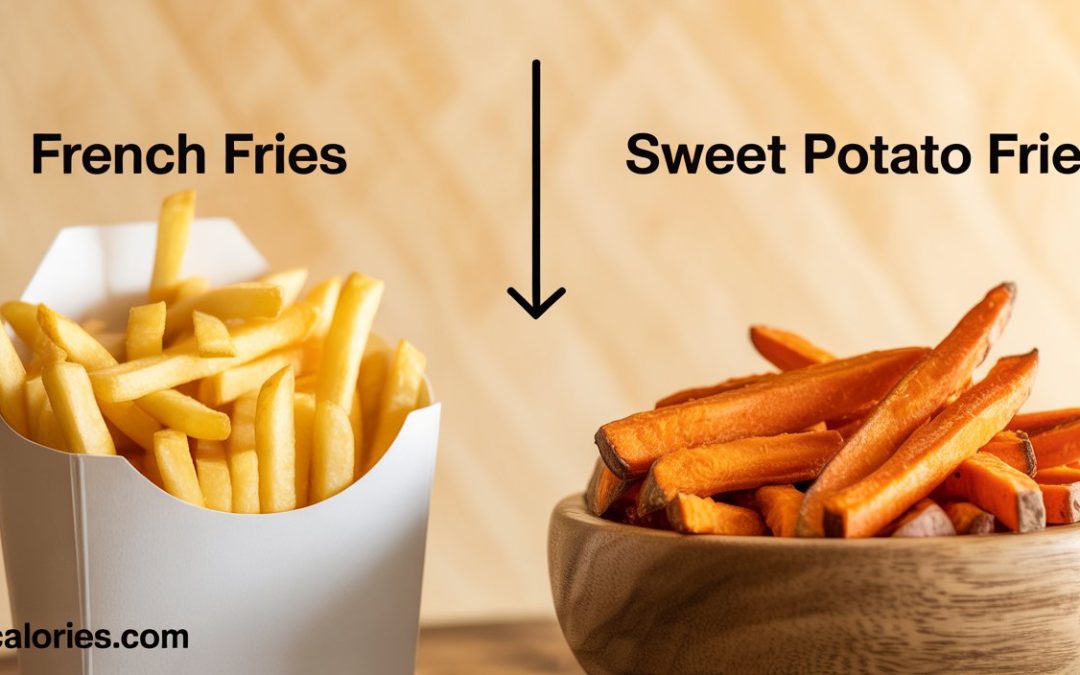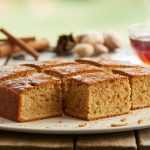French fries are beloved around the world, but many menus now highlight sweet potato fries as a healthier alternative. This expanded guide will dive even deeper into how they compare, covering calories, fat, carbs, sugar, fiber, micronutrients, glycemic index, preparation methods, taste, portion control, restaurant choices, homemade strategies, and even cultural variations. We’ll also look at practical tips for making better choices and enjoying fries as part of a balanced diet.
Detailed Nutritional Comparison Table
| Nutrient (Per 100g, deep-fried) | Regular French Fries | Sweet Potato Fries |
|---|---|---|
| Calories | ~312 kcal | ~295 kcal |
| Total Fat | ~15g | ~14g |
| Saturated Fat | ~2.3g | ~2.0g |
| Carbohydrates | ~41g | ~37g |
| Sugar | ~0.3g | ~6.6g |
| Fiber | ~3.8g | ~3.0g |
| Vitamin A | ~1 IU | ~8500 IU |
| Vitamin C | ~5 mg | ~19 mg |
(Values are approximate averages and vary by preparation.)
Calories and Fat: Small Differences, Big Impact
Although sweet potato fries have marginally fewer calories per 100g, the real factor is portion size. Restaurant servings often exceed 400–600 calories, regardless of type. Both are deep-fried in oil, contributing unhealthy fats. If you’re watching calories, share an order or substitute with a lighter side.
Fat content is also very similar, and saturated fat is present in both. Reducing frying oil or switching to baking significantly lowers fat content.
Carbohydrates and Sugar
White potatoes have more starch overall, while sweet potatoes contain more natural sugar. That slight sweetness makes sweet potato fries popular even without added condiments. Yet both types can spike blood sugar, especially when fried.
It’s important to note that while the sugar difference seems dramatic on paper, it’s not the same as added sugar in processed foods. It’s naturally occurring but worth monitoring for those on low-sugar or diabetic diets.
Fiber and Micronutrient Profile
Both types offer fiber, but not in high amounts relative to whole potatoes with skin. Sweet potatoes are a nutritional powerhouse for vitamin A thanks to their beta-carotene, and they also contain more vitamin C. This is a big plus for eye health, immune support, and antioxidant benefits.
Regular potatoes still offer potassium and other minerals, but don’t match sweet potatoes’ vitamin A content.
Glycemic Index and Blood Sugar Impact
GI measures how quickly a food raises blood sugar. White potatoes are typically high-GI, while sweet potatoes are lower when baked. However, frying raises the GI of both due to the breakdown of starches. This makes preparation critical for glycemic impact.
Choosing baked or air-fried versions helps keep GI lower while retaining nutrients.
Preparation Methods: The Game-Changer
How you cook your fries transforms them. Deep-frying in oil nearly doubles the calorie count. Homemade baked fries, using minimal oil or spray, can reduce calories by over 50%.
Air frying has surged in popularity for delivering crispy fries with far less oil. This method also preserves nutrients better than deep-frying.
Seasoning with herbs, spices, garlic, and pepper enhances flavor without excess salt or calories. Consider homemade dips like Greek yogurt-based sauces instead of sugary ketchup.
Taste, Texture, and Satisfaction
Taste is personal. Sweet potato fries offer a sweeter, softer texture that caramelizes beautifully when baked. Regular fries deliver a classic savory crunch. Satisfaction plays a big role in eating habits. Choosing the style you truly enjoy prepared in a healthier way can help avoid overeating or post-meal cravings.
Restaurant Pitfalls and Smart Ordering
Many restaurants promote sweet potato fries as healthier, but deep-fry them in the same oil and serve huge portions. Be cautious of “health halo” marketing.
Ask for nutrition info if available. Some places let you swap fries for a side salad, fruit cup, or steamed veggies. Even splitting an order with someone can halve your intake while still satisfying the craving.
Be mindful of sauces. Ranch, aioli, and even ketchup can add 50–150 calories in just a few tablespoons.
Homemade Options: Take Control
Making fries at home gives you full control over ingredients and portion size. Try cutting potatoes evenly for uniform baking. Use minimal oil or olive oil spray. Experiment with spice blends like smoked paprika, garlic powder, rosemary, or chili flakes.
Air fryers are excellent tools for achieving restaurant-style crispiness with a fraction of the oil. Baking on parchment-lined trays helps prevent sticking while keeping oil use minimal.
For an extra nutritional boost, serve fries with a side of greens, roasted veggies, or a lean protein to round out the meal.
Cultural Variations and Global Perspectives
Fries aren’t just an American staple. Belgian frites are famously double-fried. In the UK, chips are thick-cut and often served with fish. Around the world, sweet potatoes are used in many cuisines, from Japanese tempura to Caribbean roasted wedges.
Exploring these styles can offer new ideas for preparation without relying on heavy frying.
Verdict: Which Should You Choose?
If comparing typical deep-fried restaurant versions, both are indulgent. Sweet potato fries deliver more vitamins, particularly A and C, but calorie differences are small.
However, homemade or baked sweet potato fries have a clear edge nutritionally with fewer calories, healthier fats, and richer micronutrients.
Conclusion: Mindful Choices for Better Health
Ultimately, neither option is a guilt-free food when deep-fried, but both can have a place in a balanced diet when enjoyed in moderation. Sweet potato fries shine for their nutrient content, while regular fries offer a classic experience many love.
By baking at home, using minimal oil, and seasoning creatively, you can enjoy delicious fries with fewer calories, more nutrients, and greater control over your diet. Choose what you love, but prepare it in a way that supports your health goals.
© 2025 by fewercalories.com. All rights reserved. No part of this document may be reproduced or transmitted in any form or by any means, electronic, mechanical, photocopying, recording, or otherwise, without the prior written permission of Fewercalories.com.






